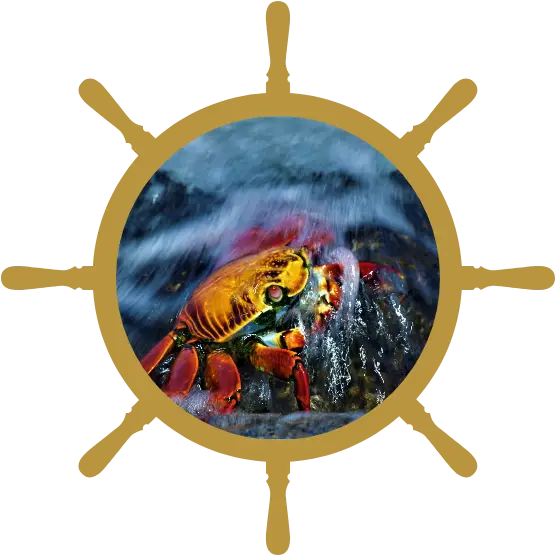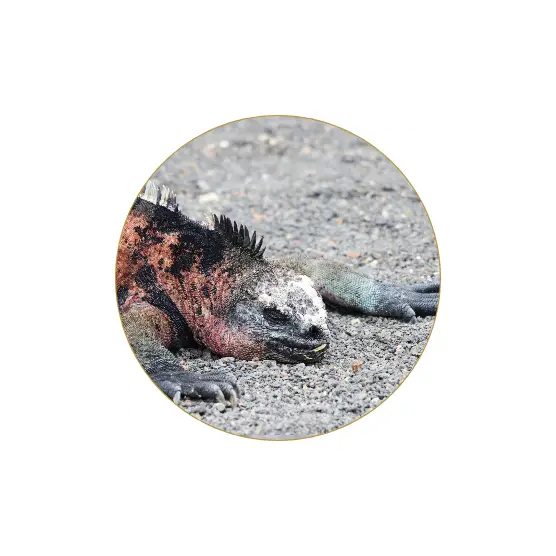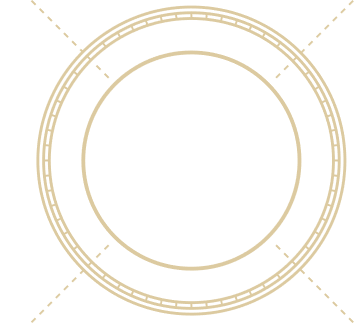Tours
Bartholome
One of the most iconic places in the Galapagos; it´s famous Pinnacle rock appears in every book and brochure about the islands.
It´s desolate landscape with hardly any vegetation, combined with dozens of small volcanic craters makes a striking contrast with the richness of its marine life.
This is one of the few places in the central islands where you can see Galapagos penguins and probably the best site to see swim with them. Small groups of Blue footed boobies and sea lions are often found at the base f the pinnacle.
A great place to get a flavour of the volcanology of these islands.


North Seymour
Seymour is one of the best central islands to observe wildlife. Located just north of Baltra its home for large colonies of sea birds, including frigatebirds, blue-footed boobies, gulls and shorebirds.
Sea lions sleep in the beaches while their pups play in tidal pools. Along the trail, marine and land iguanas bask in the sun moving only occasionally when they need to look for food.
Frigatebirds have a stronghold here and it is very likely you will see several males displaying their spectacular red balloons to attract females.
Snorkel at Seymour is equally rewarding as the land excursion; large schools of tropical fish and reef sharks are common along the shore. And with a bit of luck, you will find yourself playing with young Galapagos sea lions.
South Plazas
The Plazas islands are two twin islets of which the southern one is the only one open to visits. At first sight, It´s rocky terrain and arid vegetation does not look very inviting, but once ashore you will find many land iguanas resting under the Prickly pear cactus which are their primary food source.
As you walk along the cliff, Tropicbirds, boobies, gulls and other bird species display their acrobatic skills as the land on their nests in the strong wind. A large colony of sea lions will give you the opportunity to get close and personal with curious pups, always inquisitive about human visitors.
Although snorkel is not allowed at this visitor site, there is a lot of things to see during your walk.


Chinese Hat
Chinese hat is a volcanic cone located very close to the coast of Santiago Island. Together they form a gorgeous bay of turquoise waters contrasting with black lava fields and coral sand beaches.
Aside from its raw volcanic beauty, Chinese hat is home for a colony of sea lions and you can often see their pups playing in the tidal pools. This is an excellent place to snorkel; penguins are often spotted here as well as reef sharks, rays and many tropical fish.
James Bay
Puerto Egas in Santiago Island is one of those places where wildlife seems to gather together surrounded by stunning landscape.
A walk along the coast will give you opportunities to see plenty of wildlife, including Galapagos sea lions, Marine and Land iguanas, Galapagos hawks and many species of shorebirds. At the end of the trail you will find the grottos, home of a small colony of Galapagos Fur seals and the best place to see this species in the whole archipelago.
After the walk, a well-earned snorkel forms the beach with great chances of swimming with sea lions, reef sharks, lots of colourful fish and sea turtles.


Punta Cormorant
Located in the northern tip of Floreana, this is a very interesting site which combines two very beautiful beaches and a salt water lagoon where you will find a colony of American Flamingos. These elegant birds are not common in the islands and this is one of the best places to see them. The first beach is called “Green beach” because of its high content of crystals of olivine which gives it a unique tint.
Further in the trail you will get to a coral sand beach, an important nesting ground for Green sea turtles. Depending on the season, you may see many sea turtles gathering near the beach waiting for the night to come ashore and lay their eggs.
After the walk you will snorkel either at Devils Crown or at Champion Island; either of them is exceptions snorkel locations with incredible marine life, sea lions, reef sharks and turtles.
Punta Espinosa
Many consider this site to be one of the jewels of the Galapagos National Park. This is the only place where you can land on Fernandina Island, the largest pristine island of the world and also the most active (erupting every 3-5 years). The barren fields of black lava inland contrast with the abundance of wildlife along the shore. Hundreds of marine iguanas bask in the sun before they plunge into the cold waters to feast on seaweeds, their only source of food. Sea lions, cormorants and shorebirds are common at the coast while Galapagos hawks often perch in the mangroves looking for prey.
The snorkel is equally interesting as the nutrient-rich waters surrounding Fernandina are very productive, so you can find large numbers of sea turtles and marine iguanas feeding on algae, but also flightless cormorants chasing fish and penguins darting though the water like miniature torpedoes.
A visit to Punta Espinosa is and inspiring experience about how the Galapagos has been for millennia without the disturbance of human beings.

We are
authorized by:




